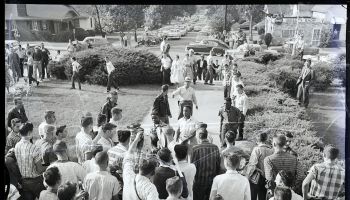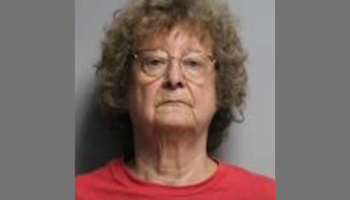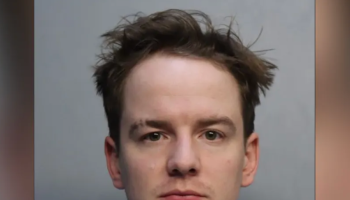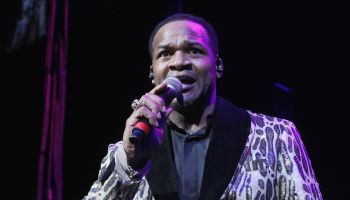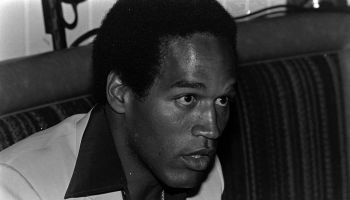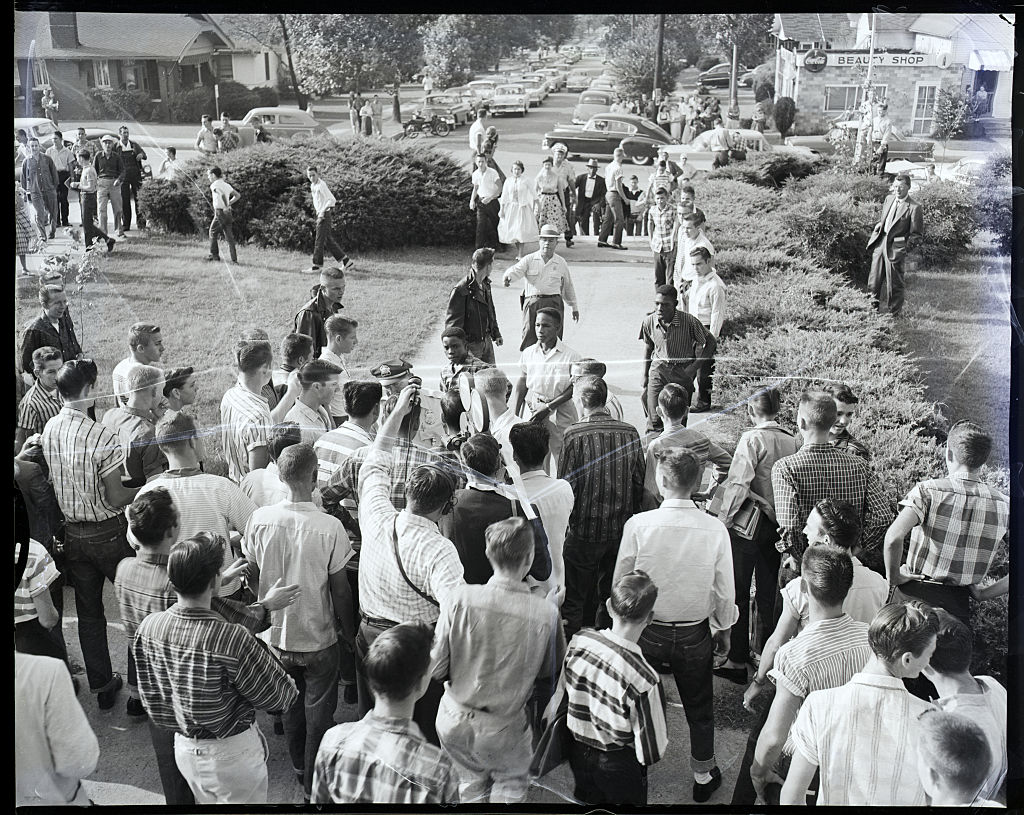
Source: Bettmann / Getty
Sundown towns, places where Black and non-white Americans face the threat of harassment and violence for simply existing, are an under-discussed part of American history. This makes sense as America can’t help but sugarcoat its history. Lies are easier to swallow than the truth, especially when they reinforce how a person views the world. While America’s military-industrial complex maintains its hegemonic power abroad, domestically, that power is maintained domestically through myths and whitewashing. The same politicians who would’ve sent the dogs on civil rights activists are the ones who whitewash MLK’s legacy to justify their own heinous policies. A sizeable portion of the population believes the plight of Black and brown communities is due to cultural differences and a victim mentality. They believe the lie because the truth, that for hundreds of years there have been systems and cultural norms designed to marginalize anyone not straight, white, or male, has been whitewashed and downplayed. One of the most dangerous cultural norms to have received this revisionist history treatment is sundown towns.
MORE: Sundown Towns Black People Should Be Aware Of
What are Sundown Towns?
Sundown towns were prevalent throughout the United States during the era of racial segregation. These were places where non-whites but most notably African American folks, were threatened with harassment, violence and death should they be caught there after the sun went down. They were all white towns by policy and design. These weren’t limited to just a few rough neighborhoods in a couple of states, thousands of towns across the United States operated this way. While it’s a common misconception that sundown towns were predominately in the South, they were and still largely are located through the Midwest and West. Surprisingly, Illinois is the state that has the highest concentration of sundown towns. Anecdotally speaking, I know that even now in my home state of Arizona, there are places that you don’t want to be at once the sun goes down. I’ve heard rumblings that parts of Flagstaff can be dangerous at night for non-whites.
One of the most notable recent examples is Kingman, Az. The racist views of the town’s population were put on display in 2018 when Sacha Baron Cohen filmed a bit for his reality show Who Is America. Cohen played an architect pitching building the world’s biggest mosque outside the Middle East to the townspeople of Kingman. The town quickly voiced their displeasure, with one of the townspeople outright saying that Black people weren’t welcome in the town. Kingman was always rumored to be a sundown town, and the clip didn’t help to change that reputation.
In the segregation days, it wasn’t hard to figure out what was a sundown town, as quite often they would proudly proclaim it with signs upon entering the town. The town of Alix, Ar., had a sign at the city limits that said, “N—r, don’t let the sun go down on you in Alix.” Anna, Ill., turned its name into a racist acronym: “Ain’t No N–r’s Allowed.” Such ingenuity. Sundown towns were not viewed with a sense of shame by the larger white population. It was an open selling point for some areas. Mena, another town in Arkansas, advertised itself in postcards with the slogan, “Cool Summers, Mild Winters, No Blizzards, No Negroes.”
You know, I’m starting to feel like I shouldn’t visit Arkansas.
How Were Sundown Towns Enforced?
Sundown towns used a mixture of soft and hard power to ensure Black people didn’t get too comfortable in their communities. The non-violent tactics could include boycotts of businesses that hired Black employees or Black travelers being tailed by cops and locals until they left the city. The less passive way would include verbal and physical harassment and in some cases lynchings. Take for instance the 1930 murder of two black teenagers in Marion, In., that drove out most of the town’s Black population.
Sadly, this wasn’t an unusual occurrence.
According to the Washington Post, as recently as 1958, the chairman of the Industrial Development Corp in Maryville, Mo., sold the city to potential businesses by saying, “We don’t have any n—-rs here in Maryville. We had to lynch one back in 1931… and the rest of them just up and left.” Sundown towns were essentially a less formal version of redlining and were one of the triggers for the Great Migration.
Why Have Sundown Towns Become Hidden History?
Well, largely by design. Most of the policies used to maintain the all-white status of these towns were erased. Also, considering that the rules of sundown towns were often not enforced through laws, but informal policies and extrajudicial killings, it was easy for the brutal reality to fade into myth. As it became clear these policies would not be looked on kindly by history, America did what it always does: bury the truth and hope no one remembers. While work has been done to shine a light on this sordid aspect of American history, it doesn’t help when you have movies like Green Book still leaning into a whitewashed, more mythologized take on the subject.
I would love to tell you that sundown towns are a thing of the past and we’ve moved on to become a kinder, gentler more inclusive country, but I ain’t much of a liar. Sadly, sundown towns are still baked into the fabric of America. They’re simply not as obvious about it, and honestly, that’s what makes them more dangerous these days. While it seems messed up, a sign telling you “don’t come here,” is at least some kind of a warning. Given that, on paper, we’re a more inclusive country, it’s not outside the realm of possibility that a Black person could be traveling only to find themselves in a place they really don’t want to be. If you plan to do some traveling by car this holiday season or are simply curious about where these towns are, there is an interactive map you can explore that shows you where sundown towns still exist across the country.
Stay safe out there, folks.
SEE ALSO:
Study Shows Young Black Americans Are Less Connected To The Black Church
These 5 States Have The Lowest Life Expectancy For Black People
The post The Sordid History Of Sundown Towns In America appeared first on NewsOne.
The Sordid History Of Sundown Towns In America was originally published on newsone.com








